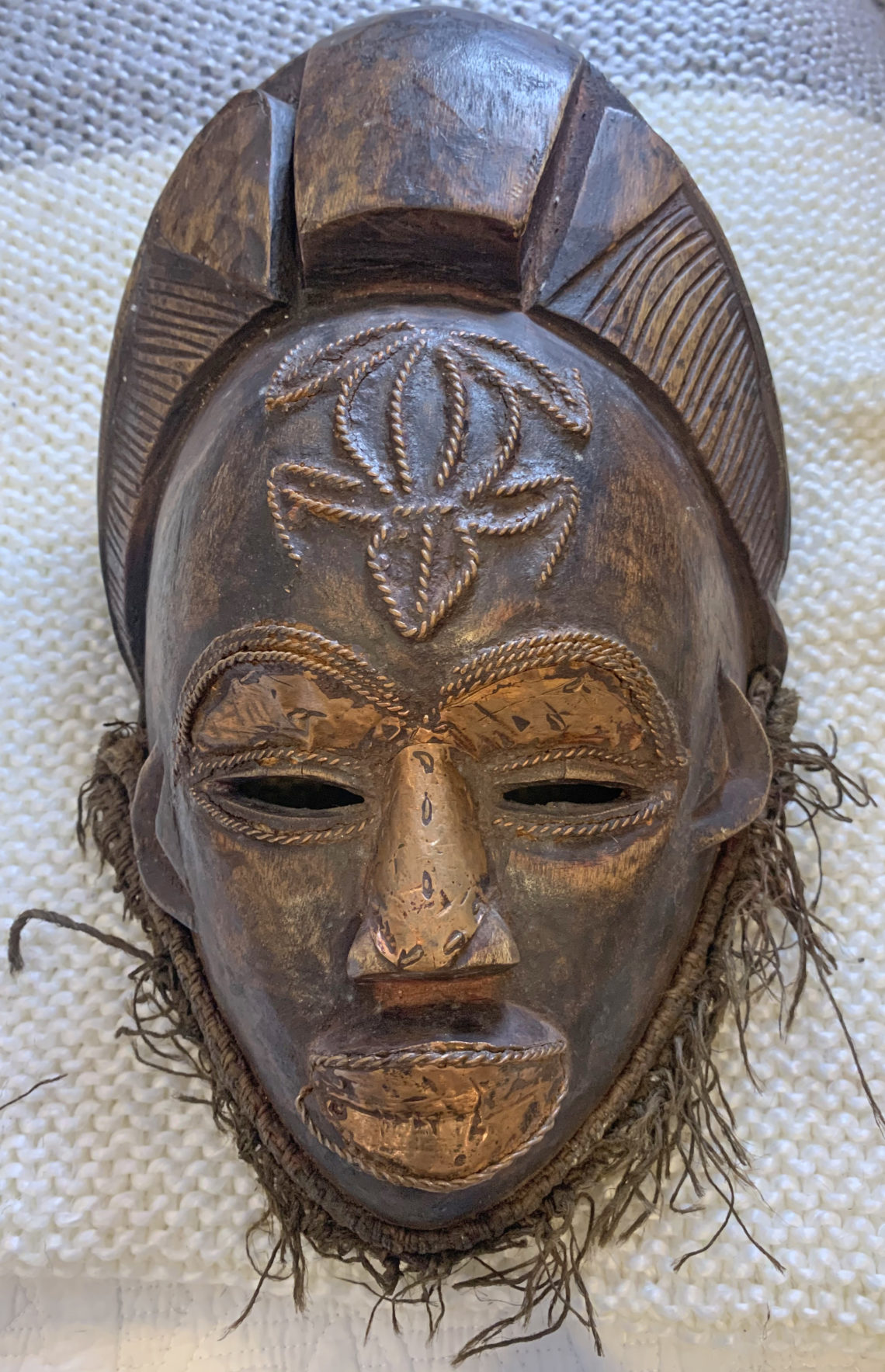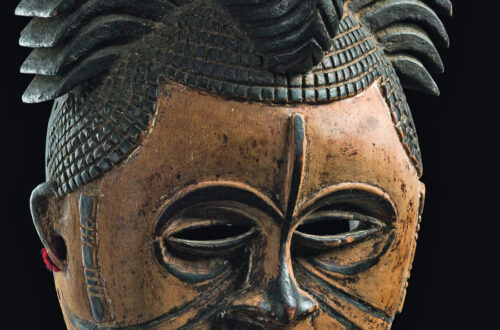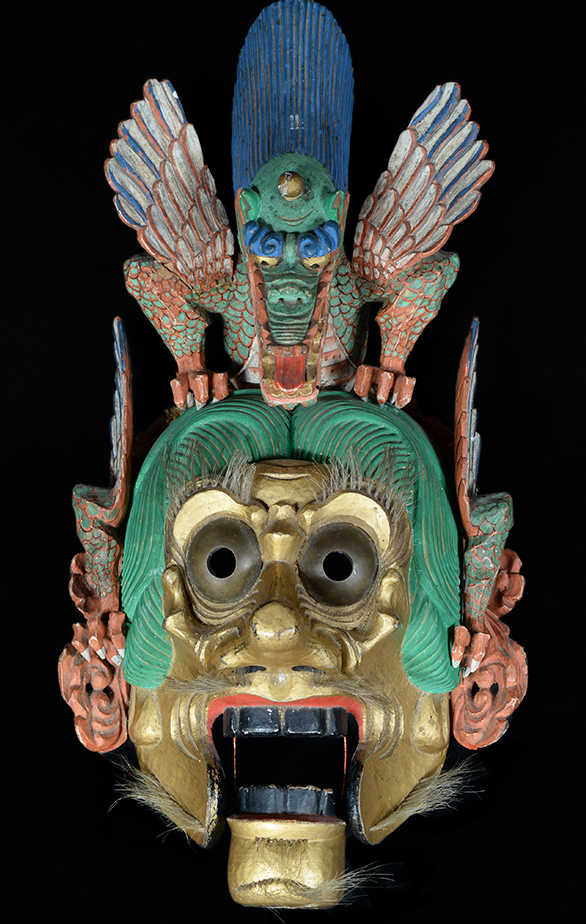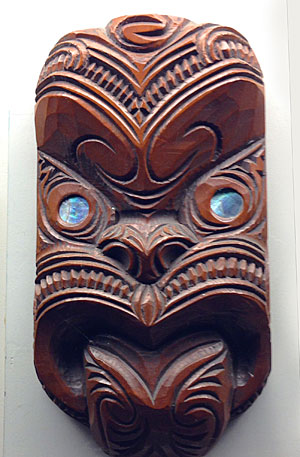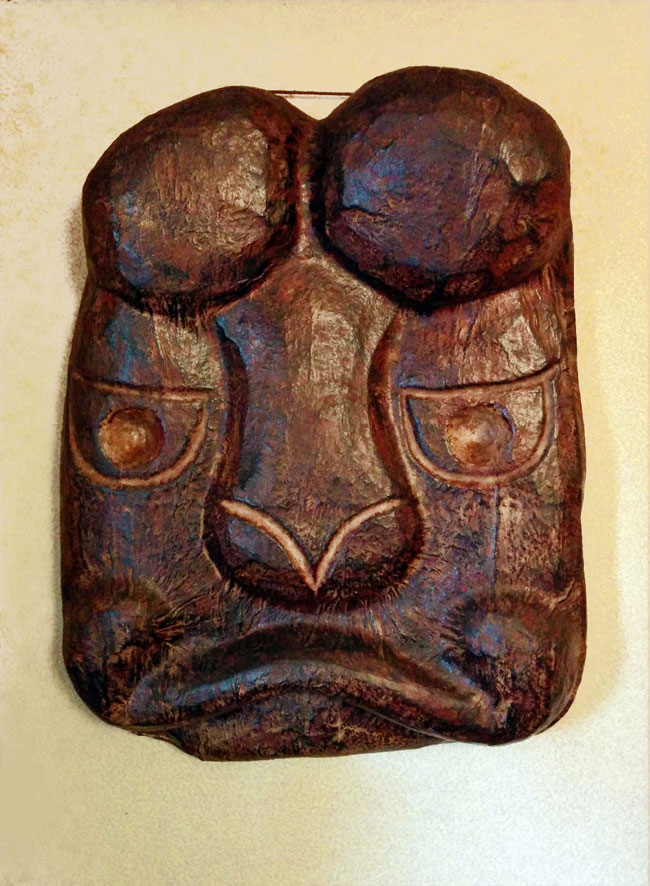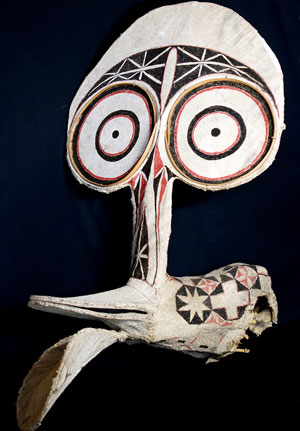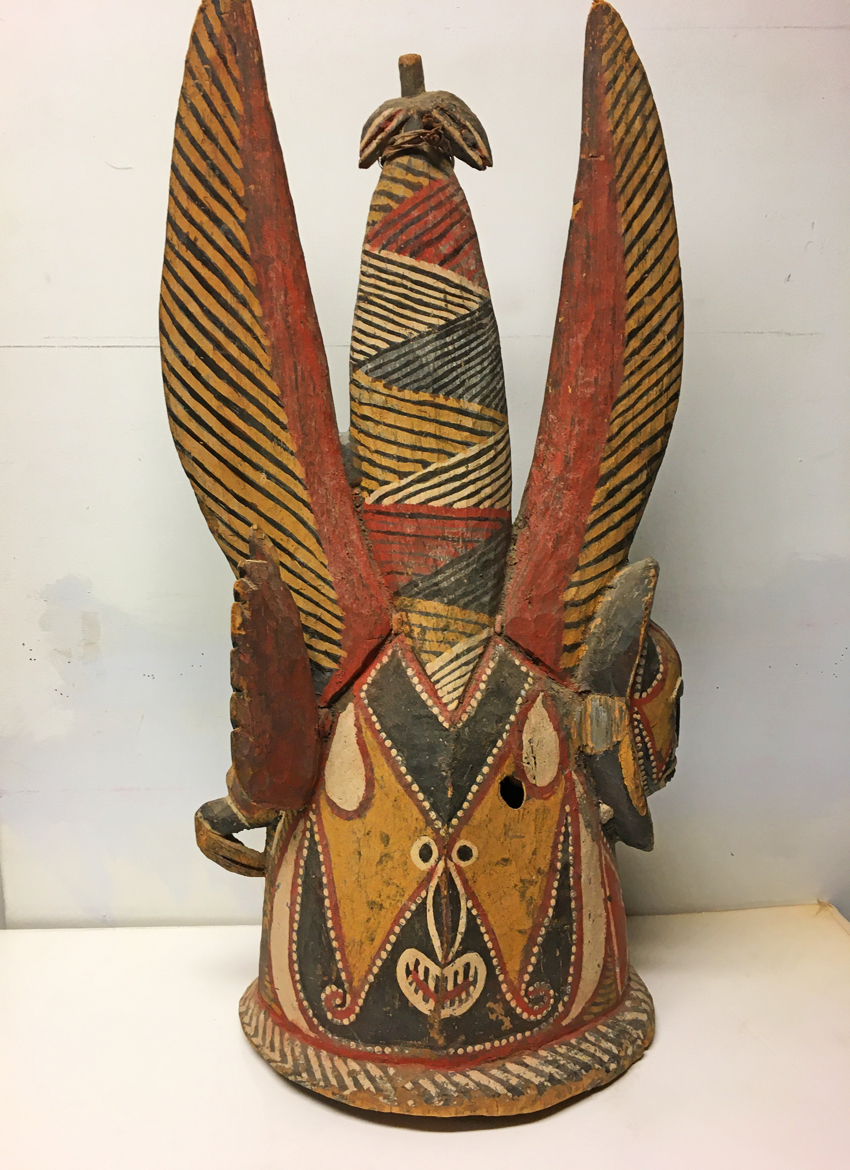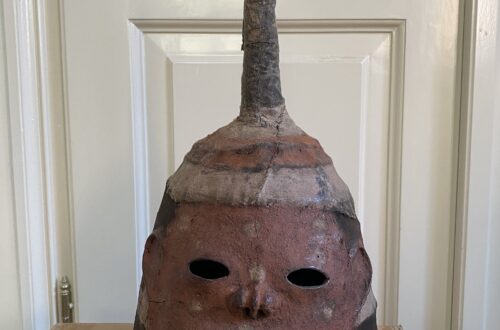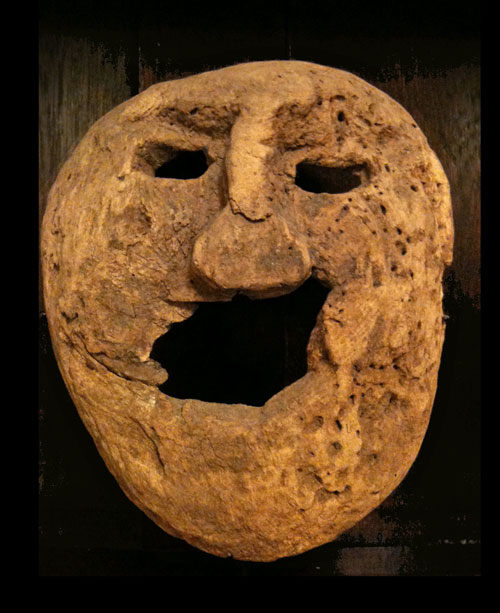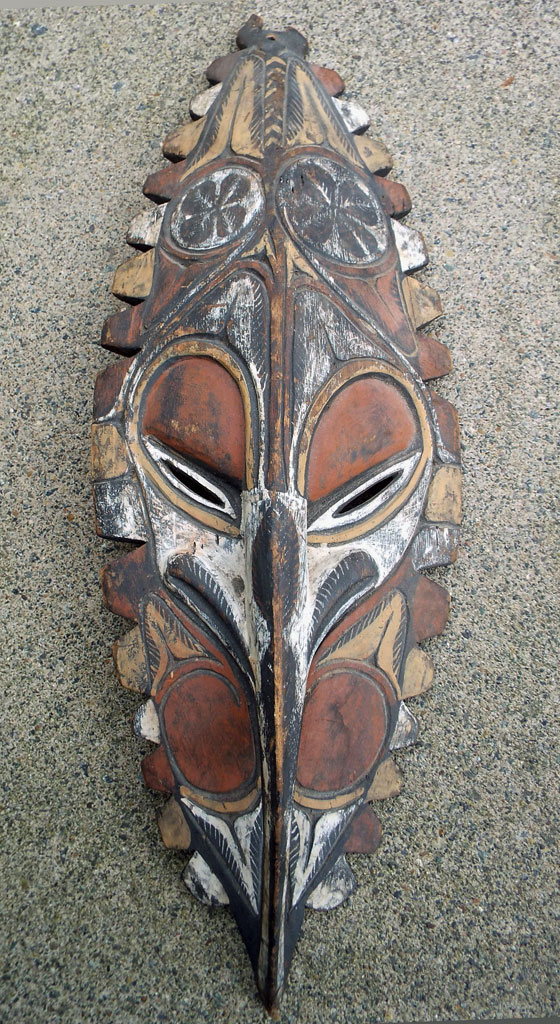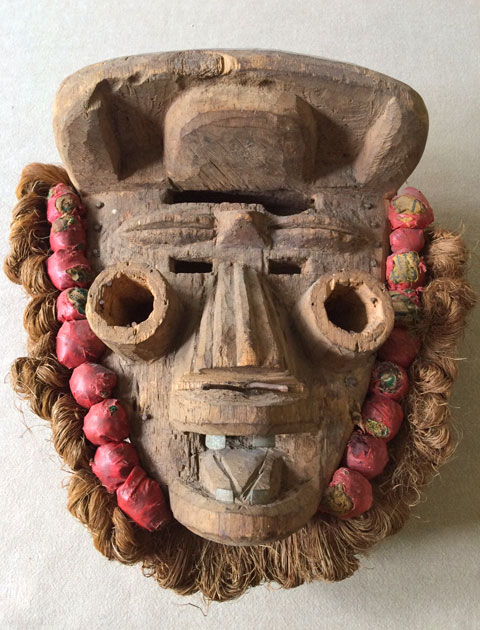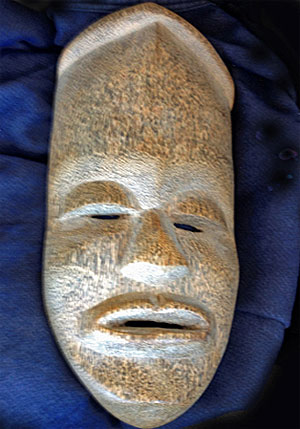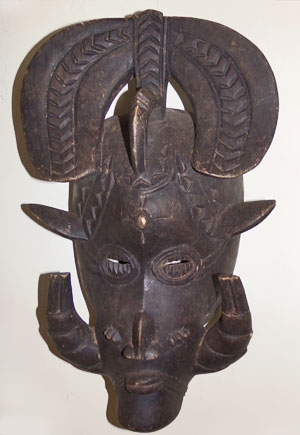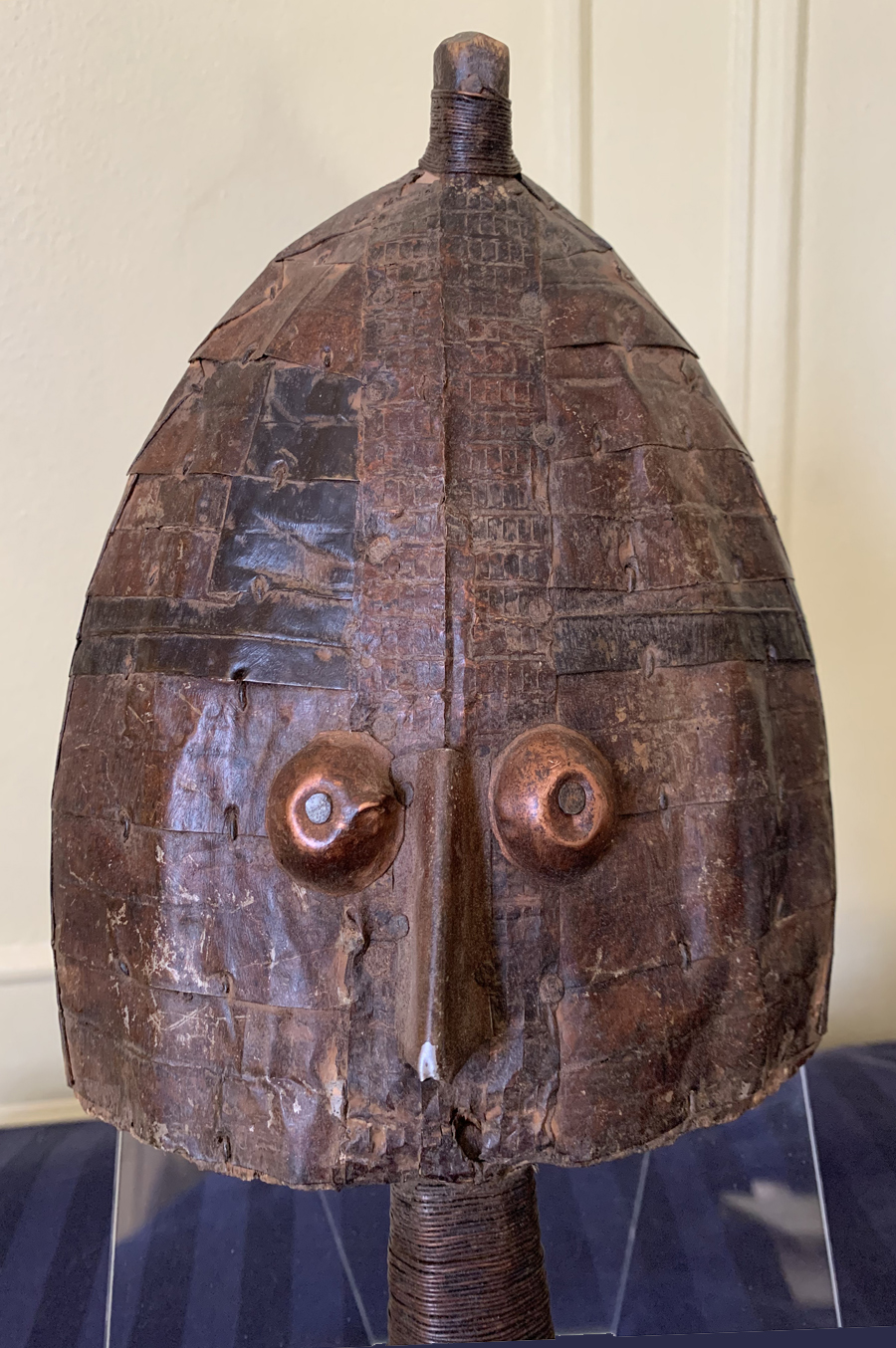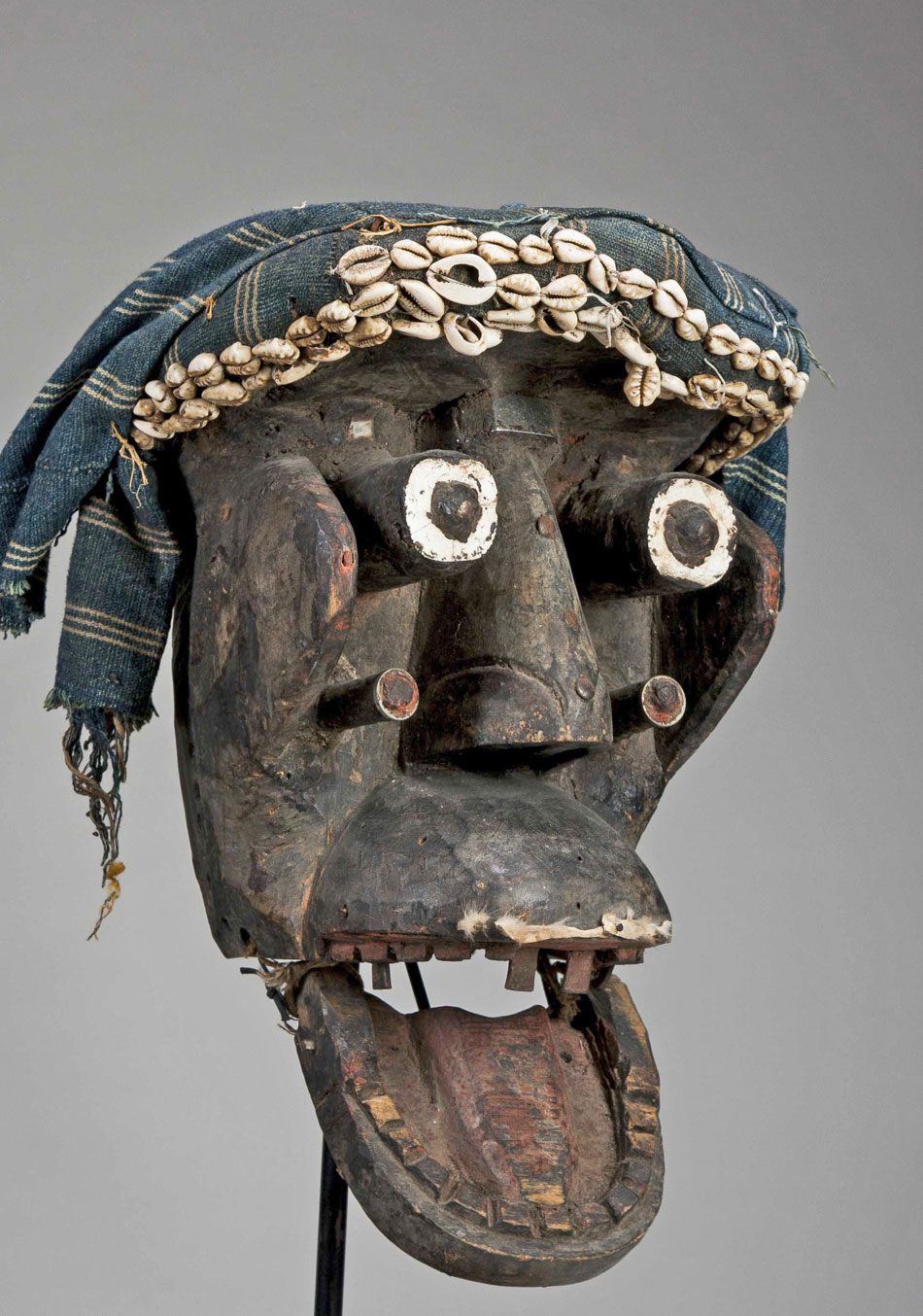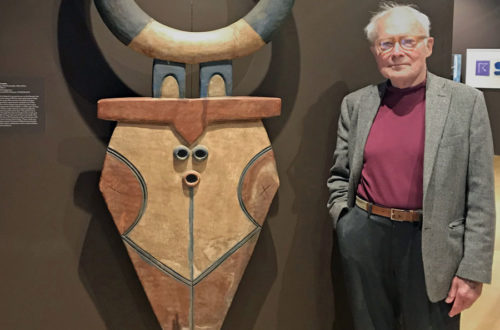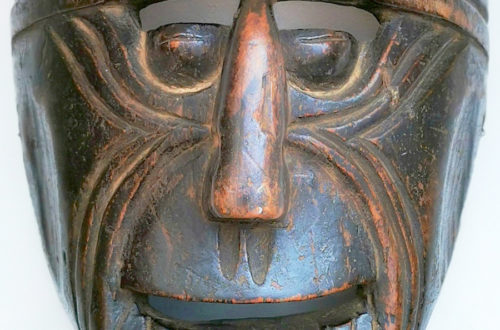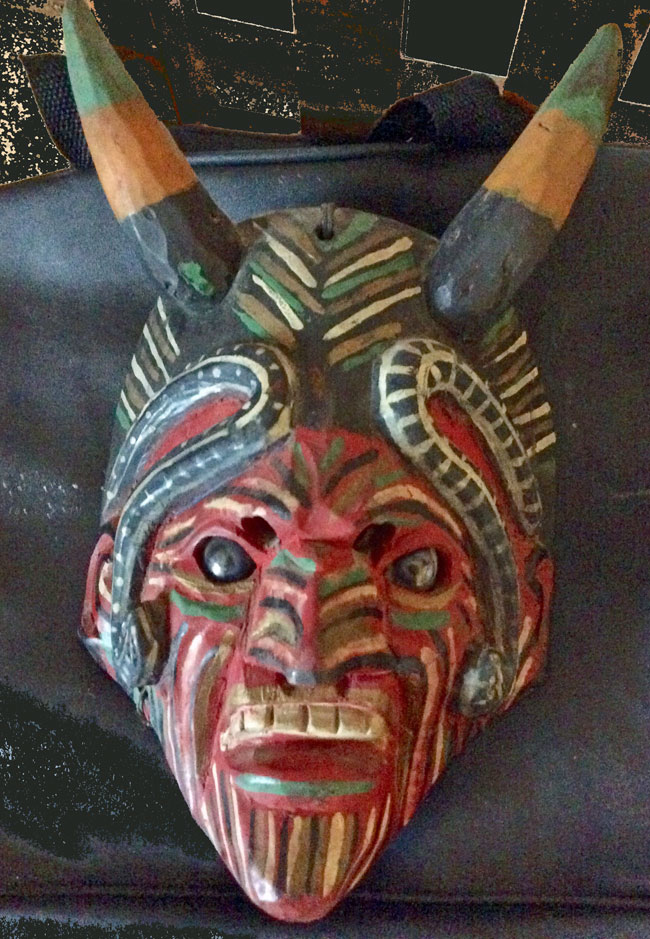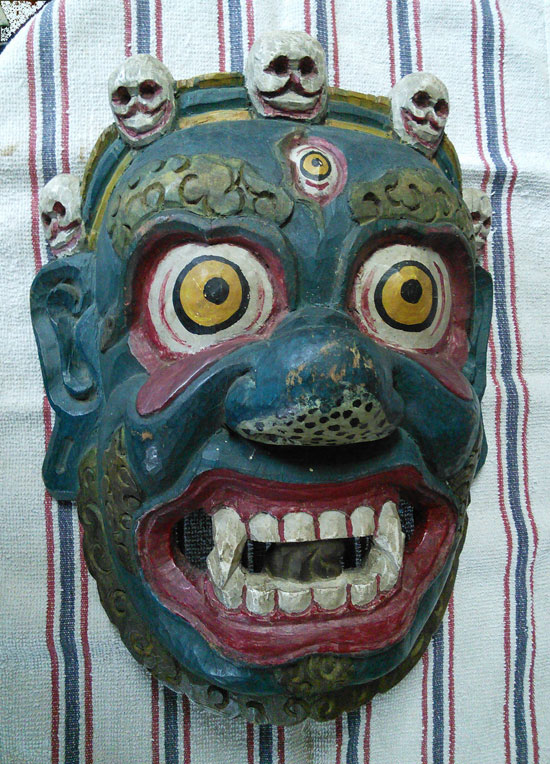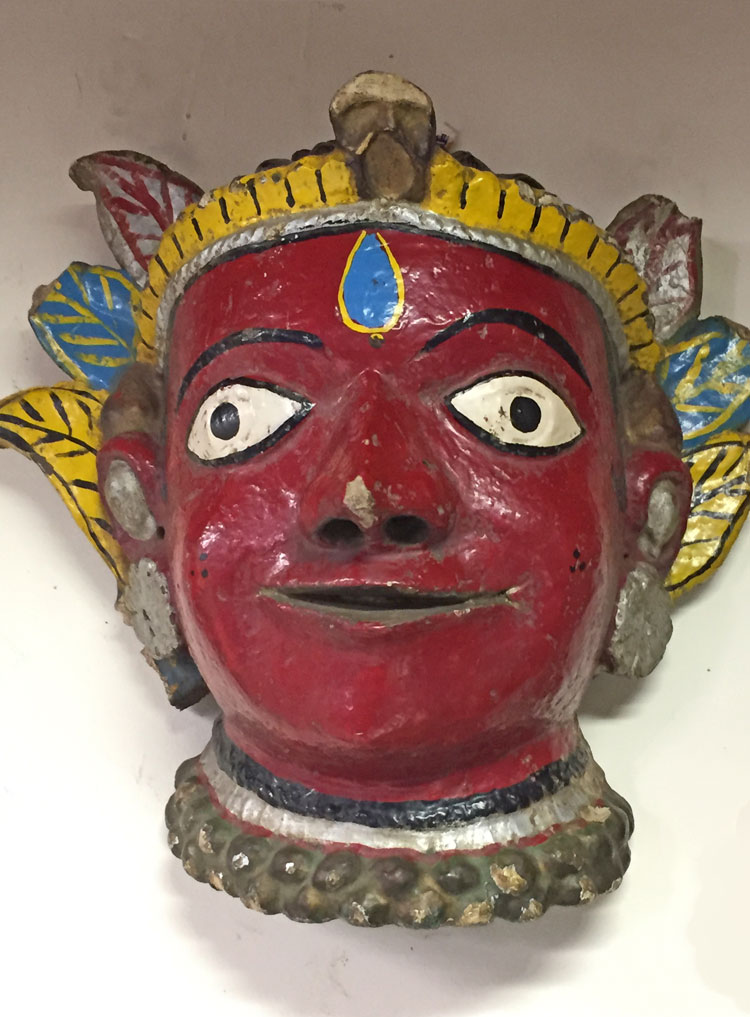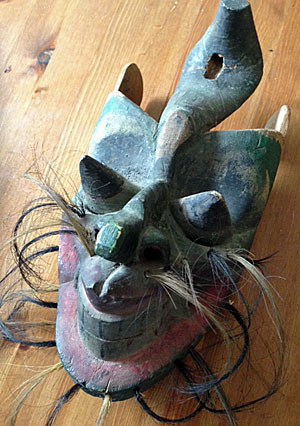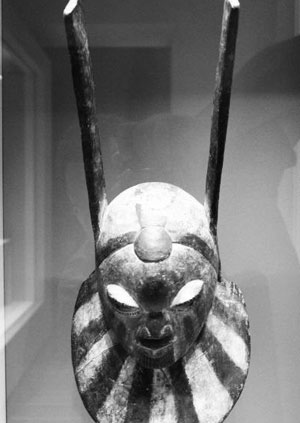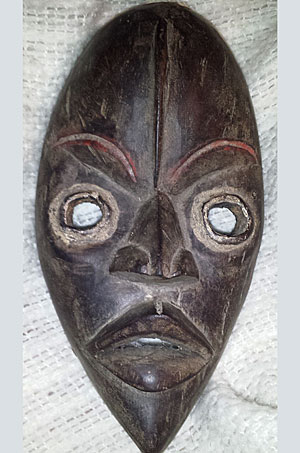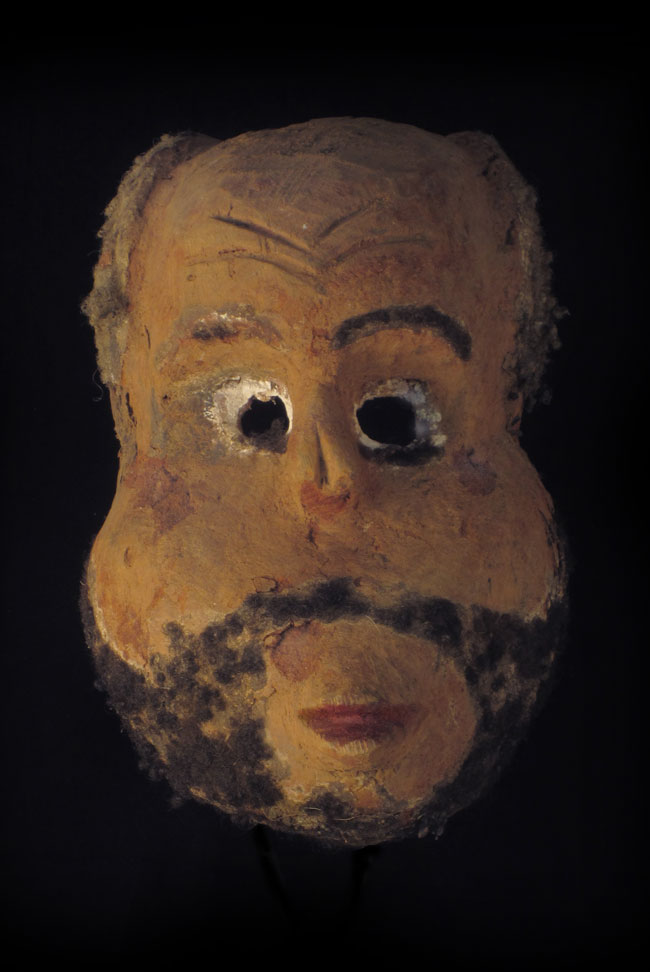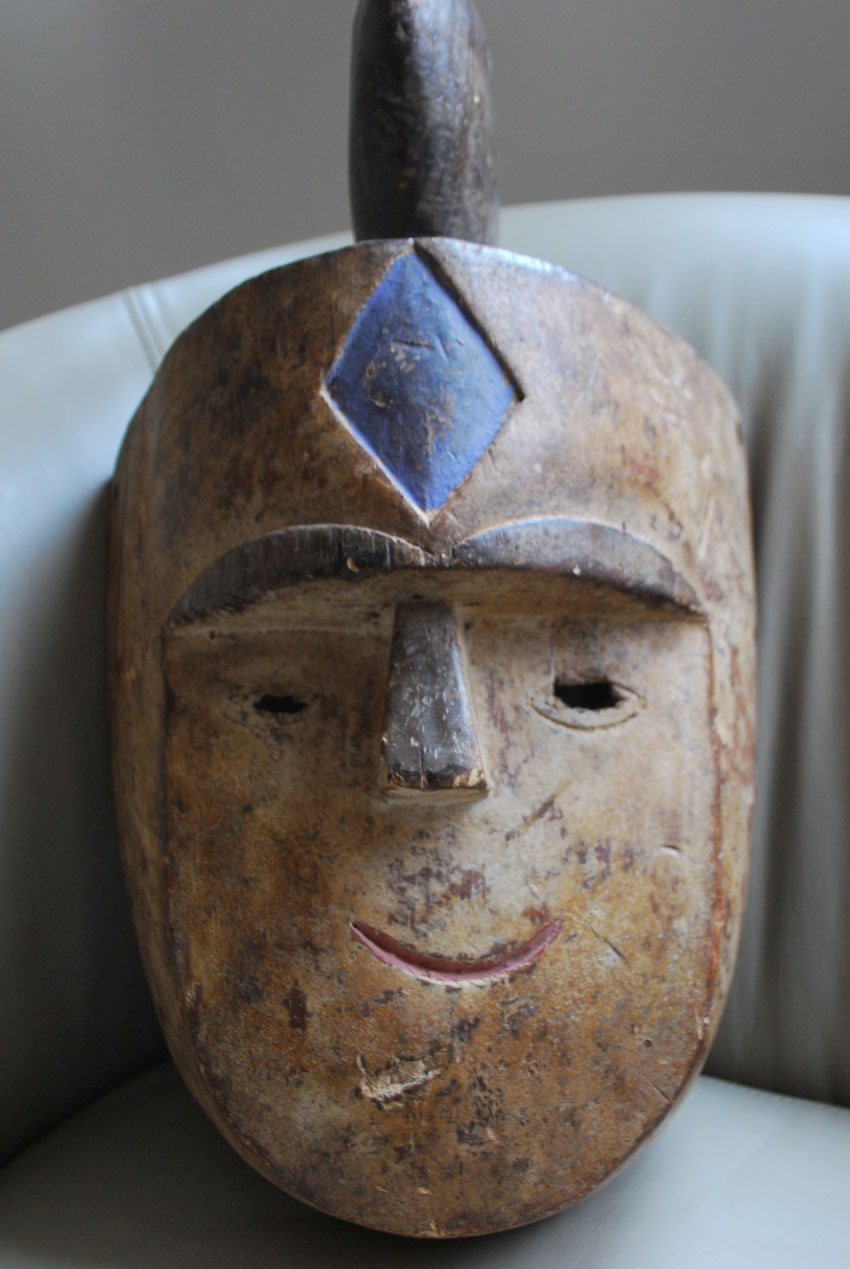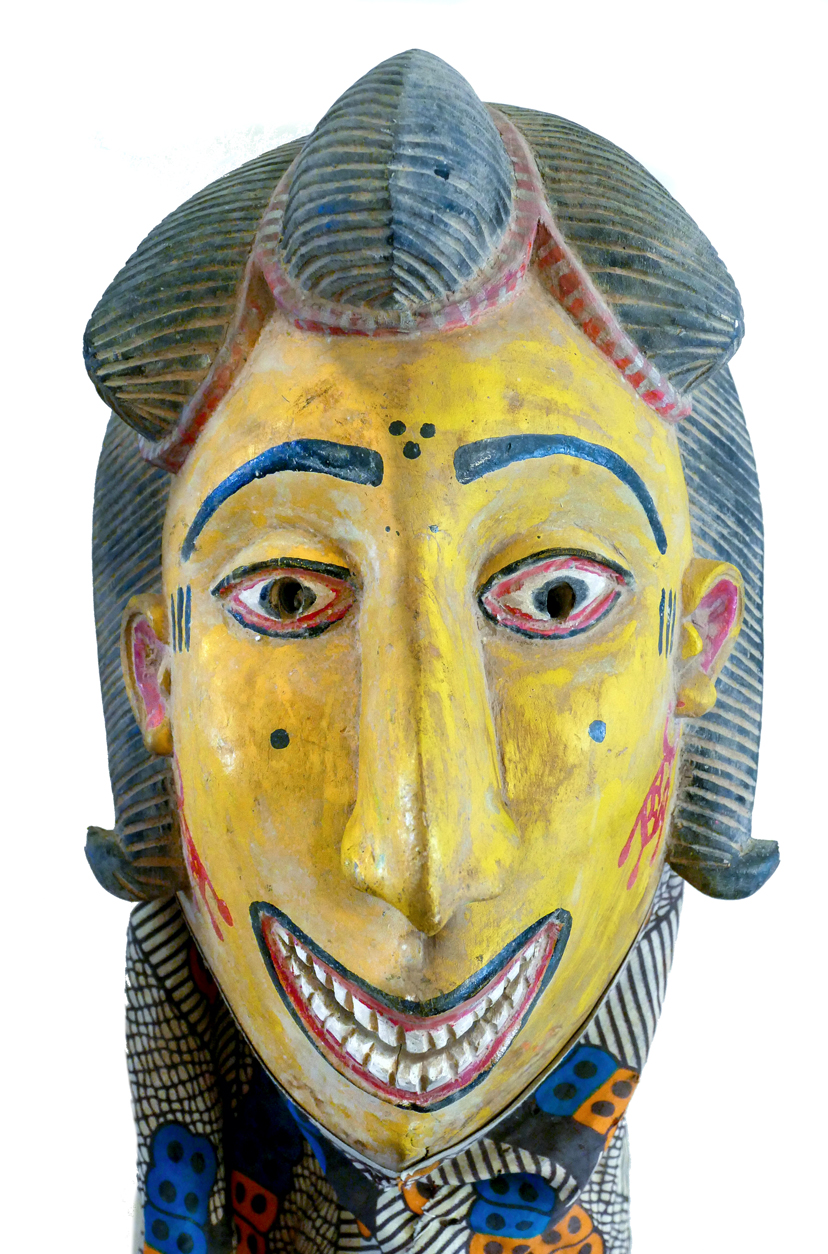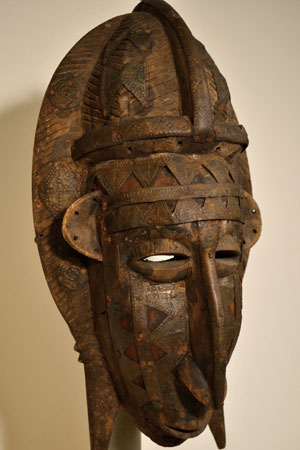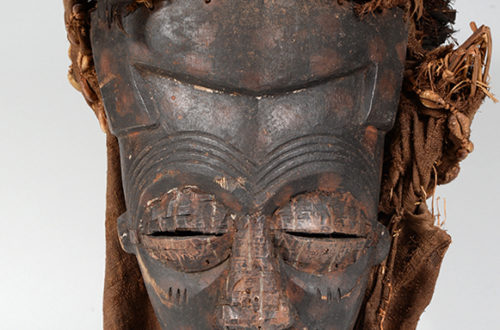Q: I stumbled upon your website when I was trying to research this mask. I found in my parents attic. I simply have no information on it, and I’m very curious about its origin, make and purpose. There seems to be iron detail on lips and eyes, as well as a frog shape on the forehead. The “beard” and chin is made of woven string. The rest is carved wood with no makers mark. I’m so curious! If you have any insight or just jumping off points I would greatly appreciate it! Lisa, 1680 A: You can find out plenty of information on the popular Mwana Pwo mask on Google.…
-
-
Bugaku King Rangryo mask, Japan
Our great friend, Aron Fellmeth of Second Face Museum of Cultural Masks has this to say: Bugaku is an official court dance of Japan, dating back to about 500 C.E. During the Heian period, Bugaku dances were so central to protocol that nearly all ceremonies and festivals included them. The dance was especially important in appeasing angry gods, purifying the village, and petitioning the gods for rain or a good harvest. The dance is performed to the music of drums and flutes. The dancers enter the stage singly in succession, then dance together in pairs, in synchronicity to varying tempos. Each dance has its own mask and is named after…
-
Cool tourist mask from PNG
Q: You have seen this helmet mask back in 2010. I wonder if you have any further information on it since then. I bought it from a consignment shop on lay away…college student…little money. Mickey, 1678 A: I can’t remember that far back, but today I think your mask is an impressive carving from the Sepik River area of New Guinea. It is too creative to be considered a reproduction, and is tourist art at its best. Let’s hope there are some collectors and curators of Melanesian artifacts who would love a modern version of PNG traditional art. B
-
Male and female Kifwebe masks from Africa
With the coronavirus still spreading and everything around town closed, lets spend more time on the computer learning about ethnographic masks. Your first website to visit could be Rand African Art. Here is part of what Rand says about a pair of Kifwebe masks in his collection. These two are from the Songye people in the Democratic Republic of Congo. They are differentiated by gender and by their shape and size but also by the basic surface coloration and the decorative design and patterns on the surface. The masks said to represent a female are rarer than masks supposed to depict a male. Normally a band of mask-wearers is made…
-
Kota reliquary mask from Gabon
Q: I am interested in learning more about this Bakota reliquary mask from Gabon. It has two faces like the god Janus. I believe it was made using wood, copper and brass. It measures 16″ H and 6.5″ at its widest. I recently purchased the mask at a NYC thrift store for $45. Thank you for your assistance. Rick, 1676 A: This highly abstract form consists of a wooden sculpture that is almost entirely encased in metalwork. At the center are projecting eyes. In frontal and rear views, the figure’s contours evoke the schematic shape of a leaf with stem. A cylindrical protuberance at the top of the head is…
-
Death mask of Pakal the Great, Palenque
Q: We are working with an auction house that is very serious and they are in contact with the Mexicans about the history. They have also arranged for age dating thru Oxford Authentication and results will be in a month. Questions asked: When was it found & by whom? What has been studied so far? Can we get new measurements from it? Background and all the history they can tell about this Stucco masterpiece. What we are sure of is that the mask is Pakal as the only thing we can be really sure of. You are free to publish what you want about the King and we will keep…
-
Primitive Himalayan mask
Q: I recently acquired 4 masks from a tiny antique shop in Mcleod Ganj, India. The woman selling them didn’t have much of an idea about them. She claimed they were collected by her grandfather, in Tibet. My wife speaks is Tibetan and spoke with her about them. She said she had around 300 to begin with, but now all were gone save a few. I would like to send you all four of those I purchase. The first here I paid USD$40. David, 1674 A: This is a carved wood mask to be used for Buddhist ritual dance in Nepal or Southern Tibet. It may have been worn a…
-
Biombo mask from the Congo
Q: I bought this mask with a label “Kambula, Zaire” at a vintage sales in Antwerp (Belgium) for 70 euro. It’s 38 cm long and 24 cm width. Wim, 1673 A: I’m guessing this is a Biombo mask from the central part of the Democratic Republic of Congo. Kambula is far away in South Africa. This handsome mask is probably a well-made reproduction, but it could be a used artifact. The design is beautiful, especially when viewed from the side. You got a good deal even if it is a repro.
-
Special Dan mask from West Africa
Here is an unusual Dan mask from Liberia in the late 19th-early 20th century and now in one of the Smithsonian museums. It is nicely carved in a slightly different way, and features a white paint treatment that really got my attention. I like this mask a lot! A Coronavirus suggestion: spend more time on your computer and share an interesting mask picture with us. You won’t hurt anyone. 1672
-
Bozo puppet headpiece from Mali
Q: In keeping with the current African theme, I thought you might like to see this large Bozo mask I picked up a few years ago. It’s approx 22″ tall by 14″W. I really liked the bright color and the cartoonish facial expression. I don’t think it’s very old, but it’s very well made, and one of the more interesting Bozo masks I’ve seen online. The following information is from the seller: “This is a fabulous Bozo Puppet that comes from Mali. Bozo Puppets are used by the people of the Bozo tribe of Central Mali to tell the stories of their tribe. The young men’s association is responsible for…
